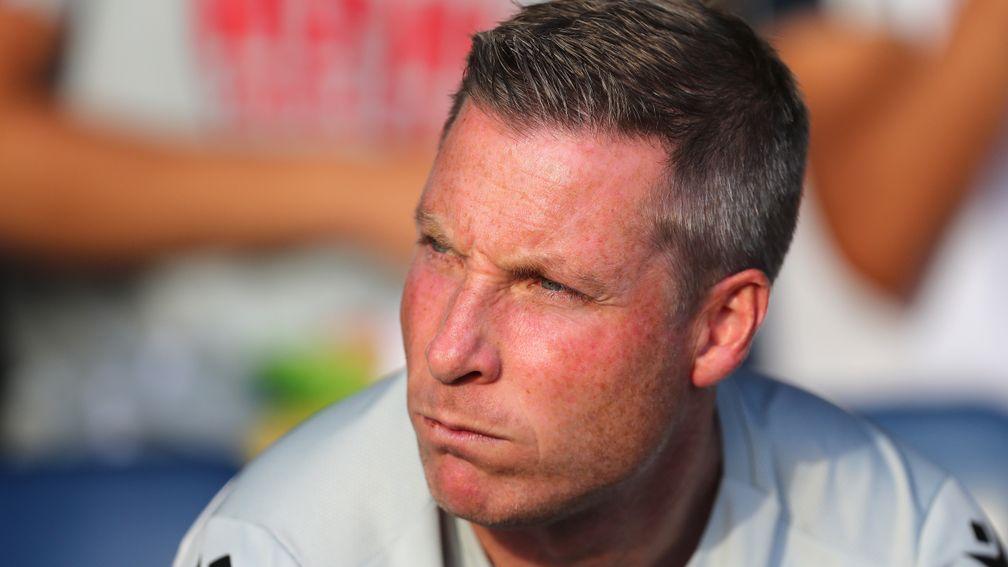Kevin Pullein: Scores change with the weather at lower altitudes in the EFL
Soccer Boffin Kevin Pullein offers his weekly dose of betting wisdom

At this time of year in League One and League Two goals are scarcest.
Football is a seasonal sport. In England it is played mostly between August and May. Each campaign starts and ends in sunshine. Between there can be wind, rain, sleet, snow.
The weather can make a difference to how games are played and how many goals are scored. Its impact tends to be higher at lower levels of competition.
In the Premier League there is so much money that pitches are nearly always in perfect condition. There might be snow outside a stadium, but the playing surface will still be an emerald green.
In the Premier League there is not much variation in scores from month to month. There is more in the Championship, and more still in League One and League Two. Groundsmen are as dedicated at the bottom of the EFL as at the top of the Premier League, but they do not have the same resources.
Here are some figures covering completed seasons between 1997-98 and 2021-22. Goals per game in League One and League Two rose from 2.56 in August to a high of 2.67 in October, then fell to a low of 2.45 in February and March, after which they rose to 2.51 in April and 2.64 in May.
Those changes might seem small – just over two-tenths of a goal per game from peak to trough. They had a meaningful impact, though, on over/under 2.5 goals rates. In October 50 per cent of games featured fewer than 2.5 goals. In February and March the proportion was 56 per cent.
In a typical game a fair price about under 2.5 goals would have been evens in October and 5-6 in February or March. That is a huge shift.
Thought for the week
International qualifiers illustrate an important point about ground advantage. It is not constant. It varies with the type of game.
The crucial factor is not the stadium’s footprint, or its footfall, but the difference between the teams in skill at playing football.
Ground advantage matters most when the difference in ability between teams is small. It matters least when the difference in ability is large.
I examined European qualifiers for six European Championships and seven World Cups – from Euro 2000 to Euro 2020 and World Cups between 1998 and 2022.
Take any pair of opponents. Generally, each team was more likely to win at home than away. But the difference between the chances of winning went down as the difference in ability between the teams went up. Eventually it vanished.
I ranked countries by results across all qualifiers. You could do it in other ways, but I am sure you would find the same thing.
Look at what happened in games between teams I ranked as the seven best and seven worst in Europe. The first group was Spain, Germany, England, Italy, Netherlands, France and Portugal. The second group was Gibraltar, San Marino, Andorra, Malta, Liechtenstein, Luxembourg and Faroe Islands.
Fifty-nine times a team from the best group played at home to a team from the worst group. There were 58 home wins, one draw and no away wins. Fifty-nine times a team from the best group played away to a team from the worst group. There were 58 away wins, one draw and no home wins.
A tiny stadium in a tiny country might seem a lot different from a world-renowned arena in a leading football nation. When the gap in skill between players reaches a certain width, however, the venue becomes in practice irrelevant.
Sign up to emails from Racing Post Sport and get all the latest news and tips
Today's top sports betting stories
Follow us on Twitter @racingpostsport
Published on inOpinion
Last updated
- Tom Clark: Luke Humphries the missing SPOTY nominee out to spoil Littler's party
- Mark Langdon: Overseas fans need more respect
- Simon Giles: Maintaining intensity is crucial for mid-table improvers
- Mark Langdon: Premier League rollercoaster leaves me sick
- Patrick Madden: Joe Schmidt's revolution should ensure the Lions won't have it all their own way Down Under
- Tom Clark: Luke Humphries the missing SPOTY nominee out to spoil Littler's party
- Mark Langdon: Overseas fans need more respect
- Simon Giles: Maintaining intensity is crucial for mid-table improvers
- Mark Langdon: Premier League rollercoaster leaves me sick
- Patrick Madden: Joe Schmidt's revolution should ensure the Lions won't have it all their own way Down Under